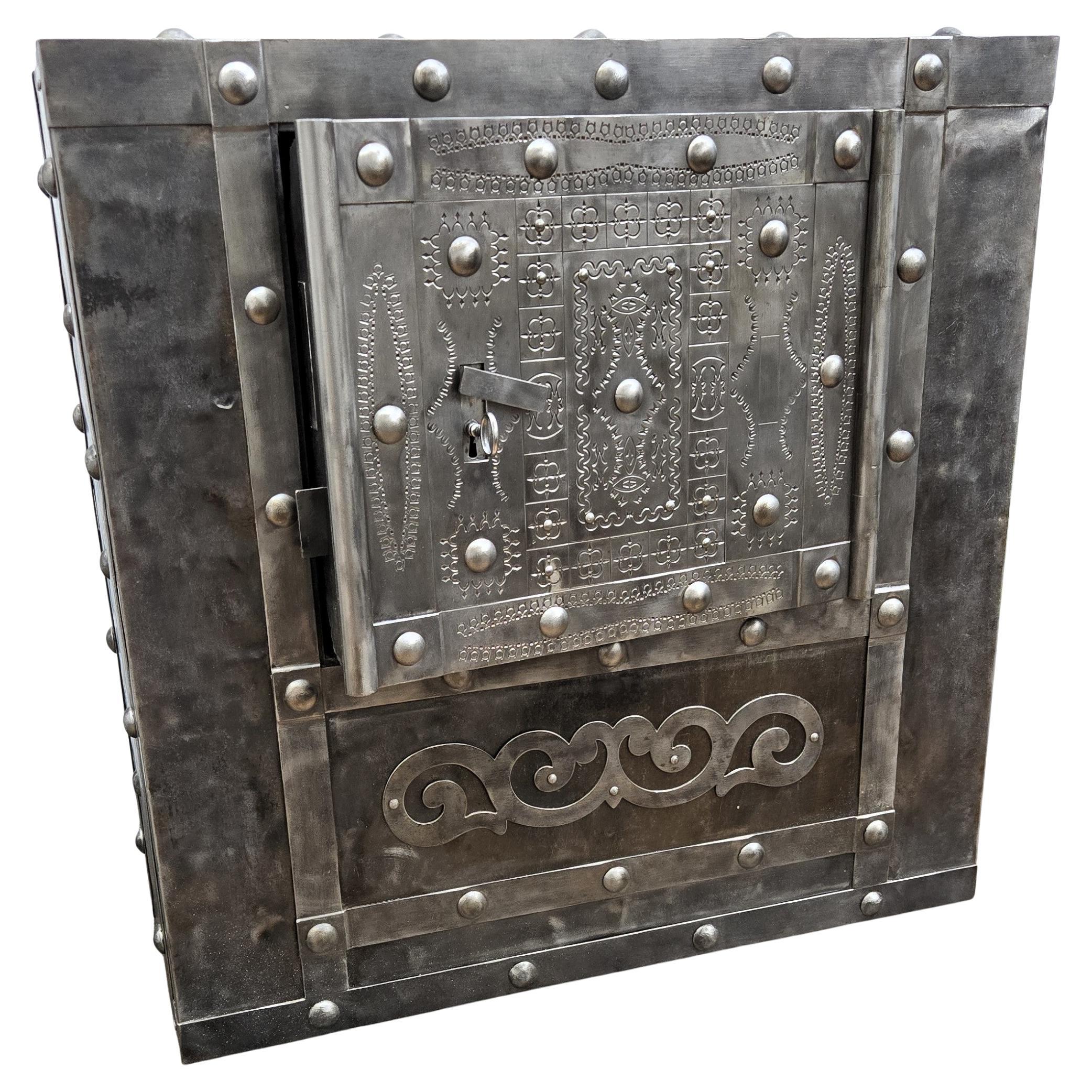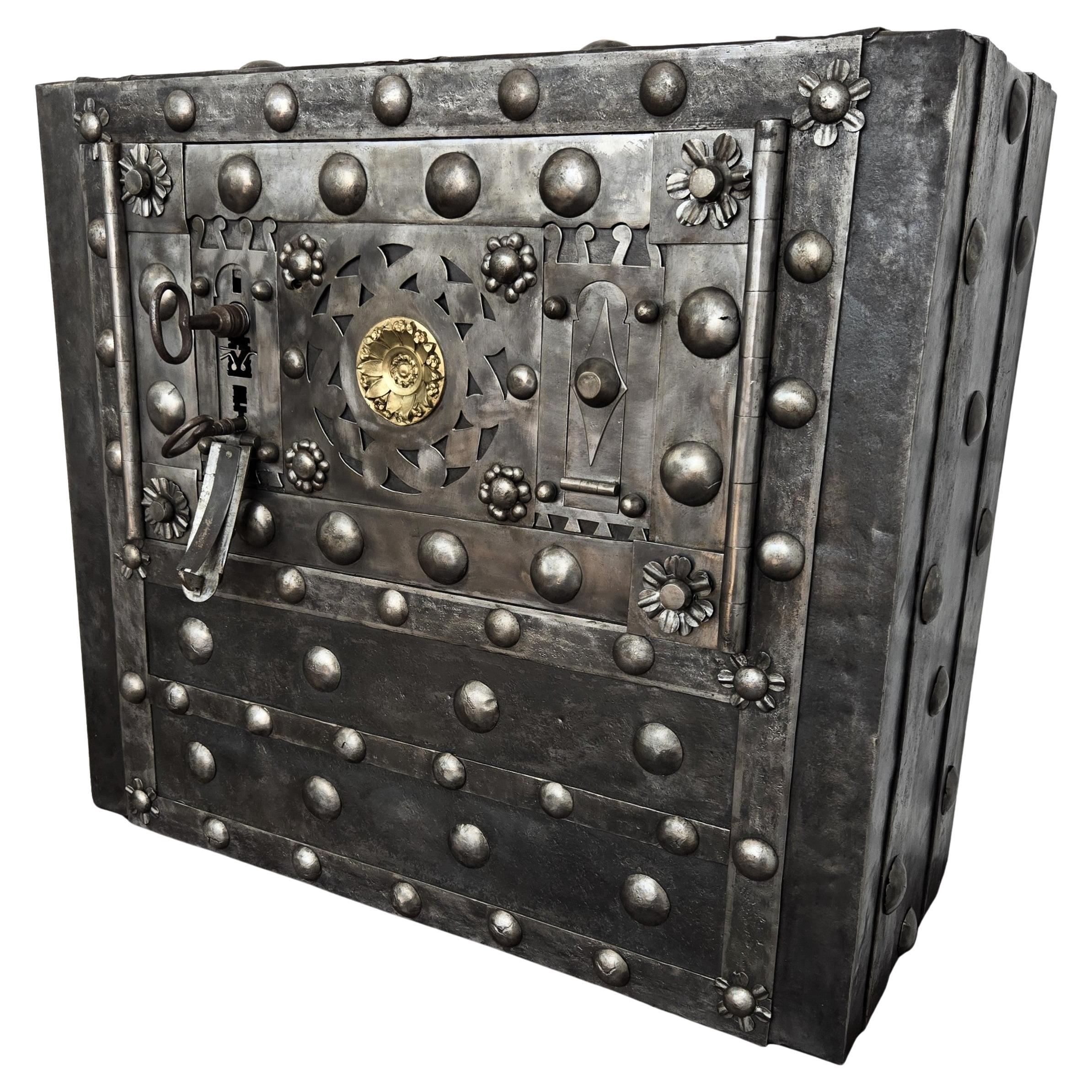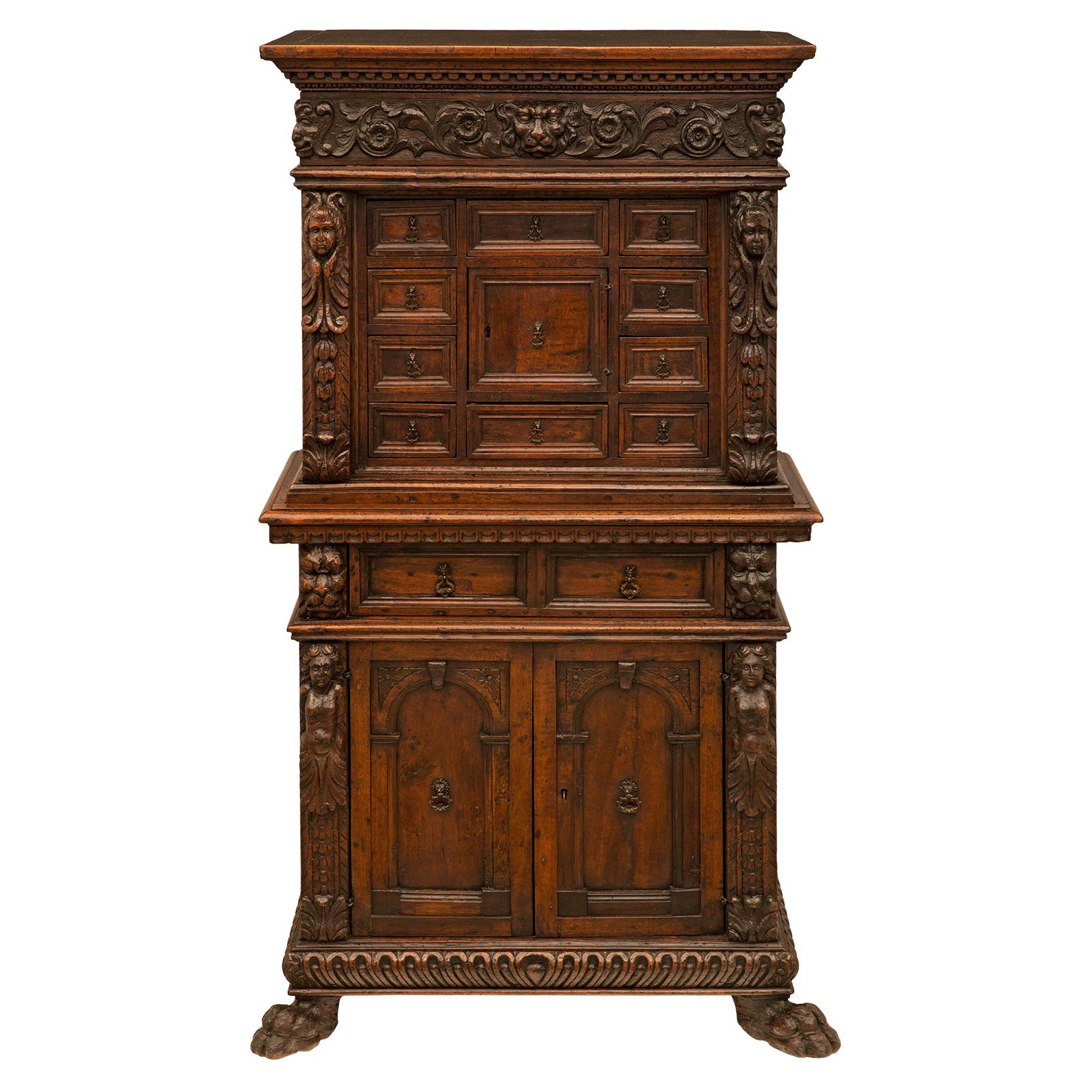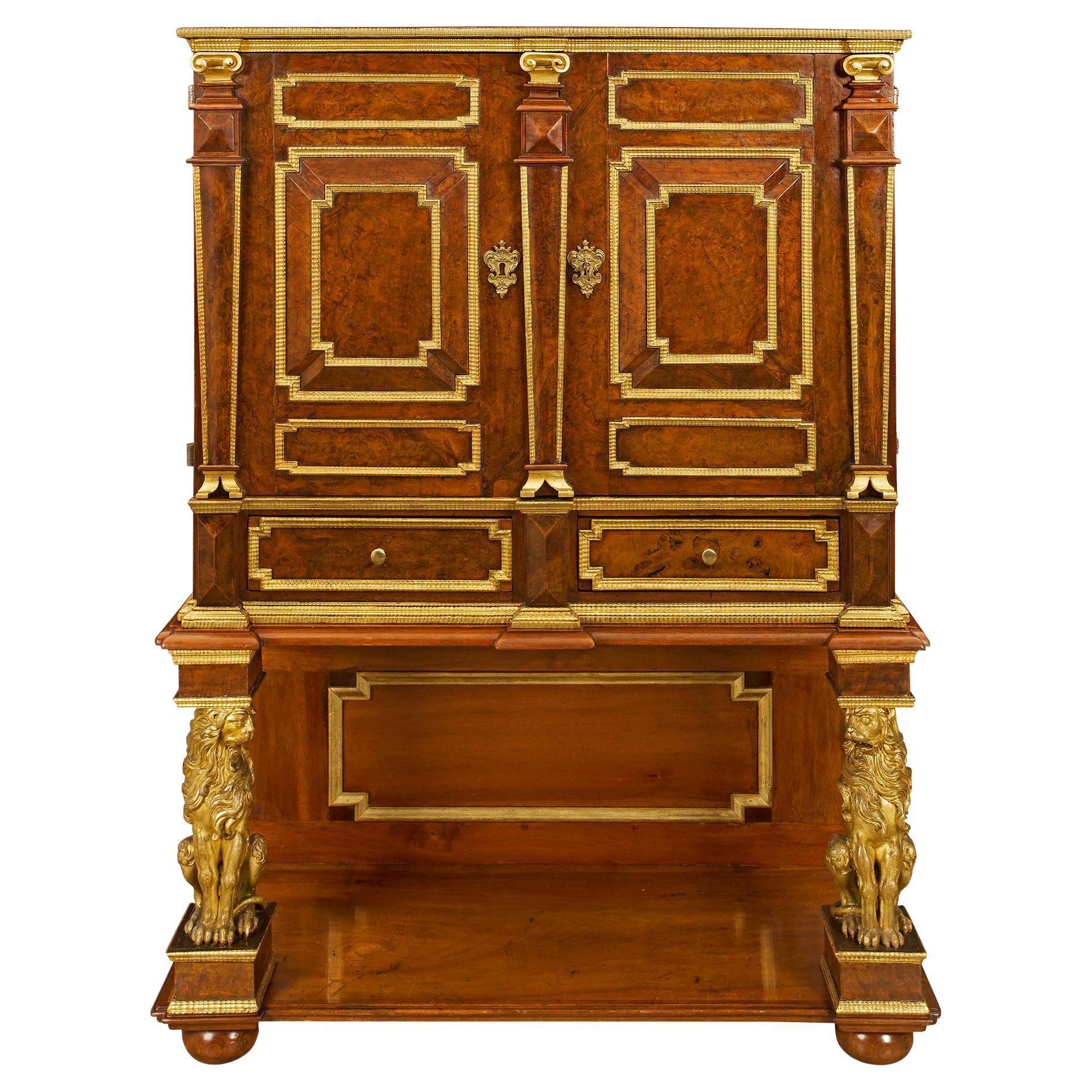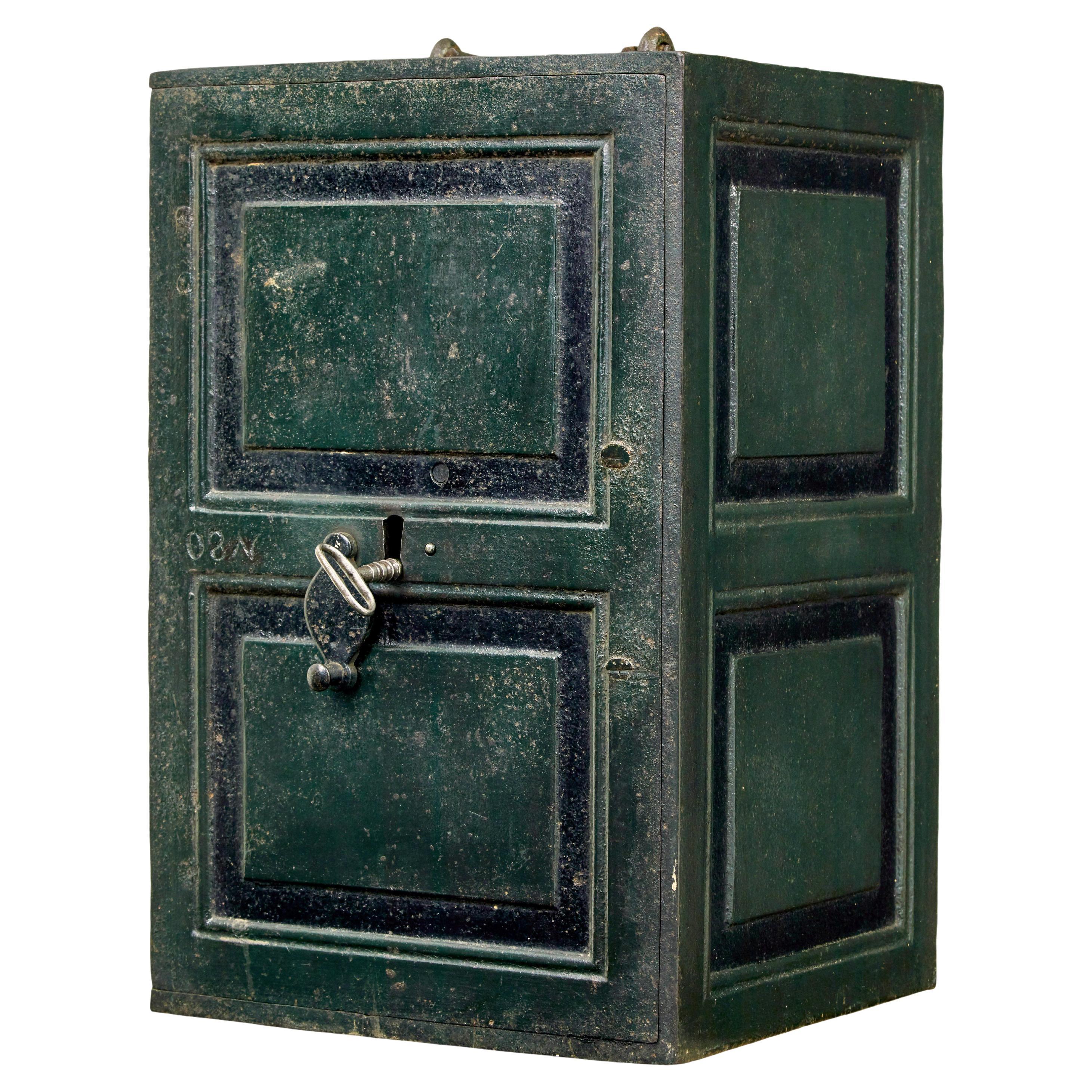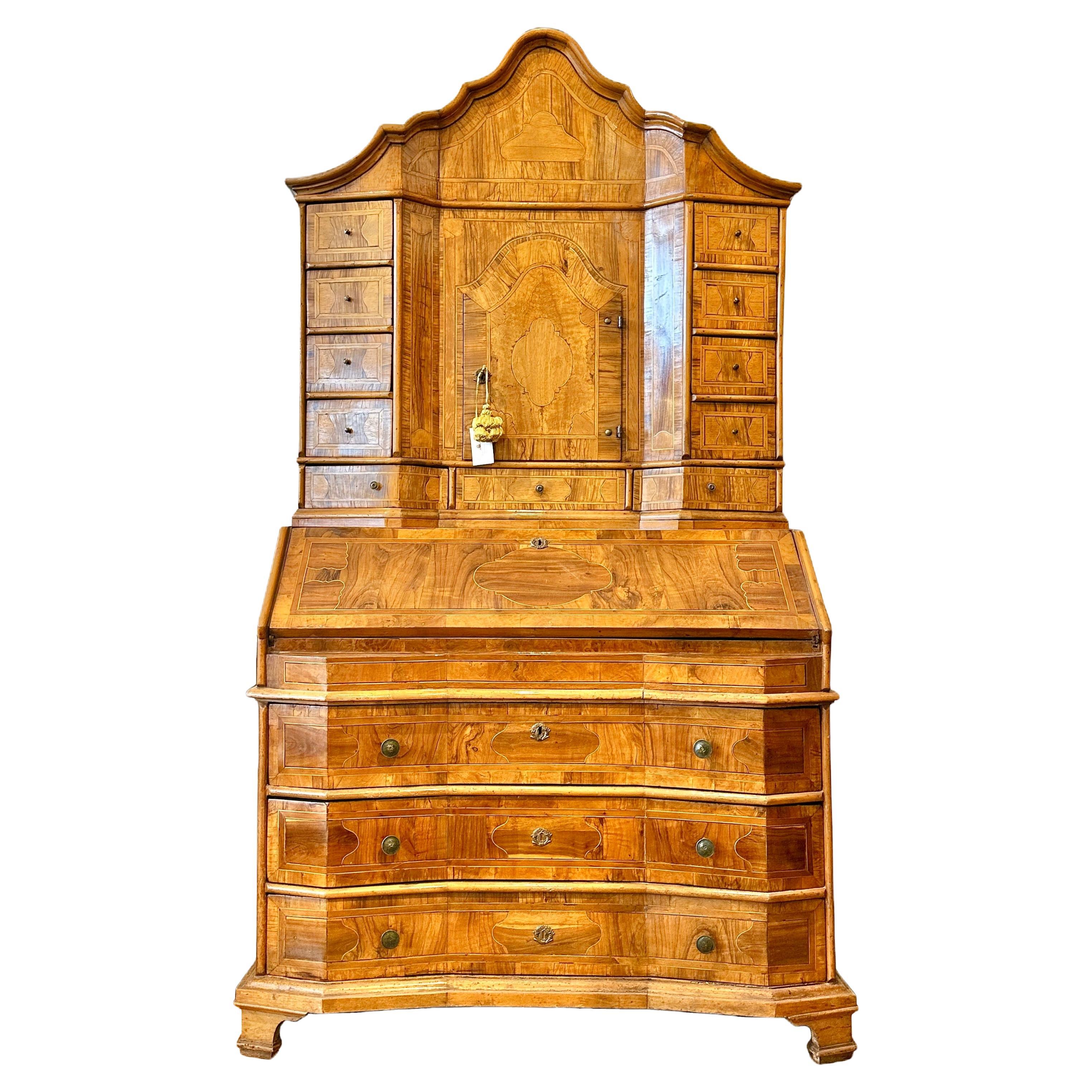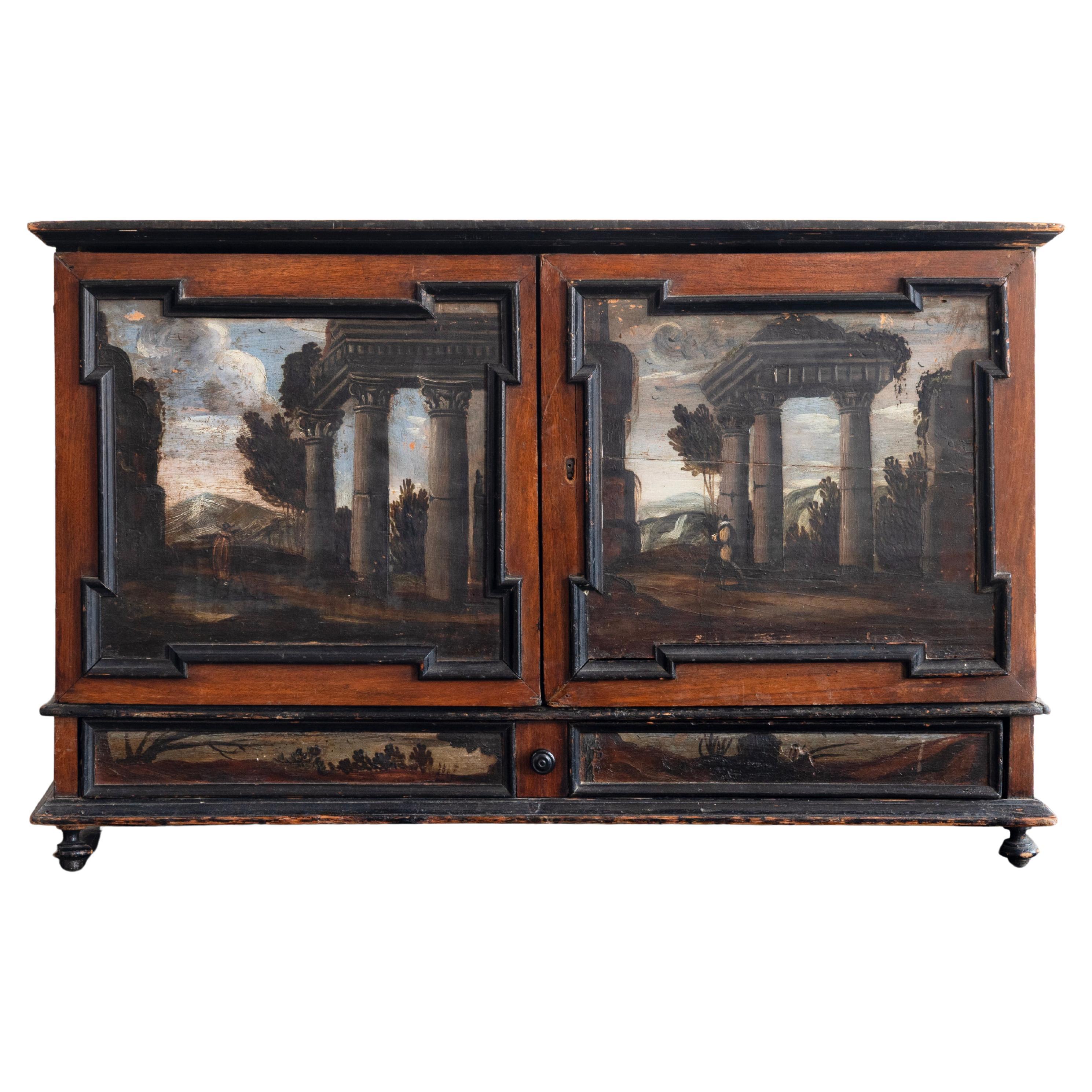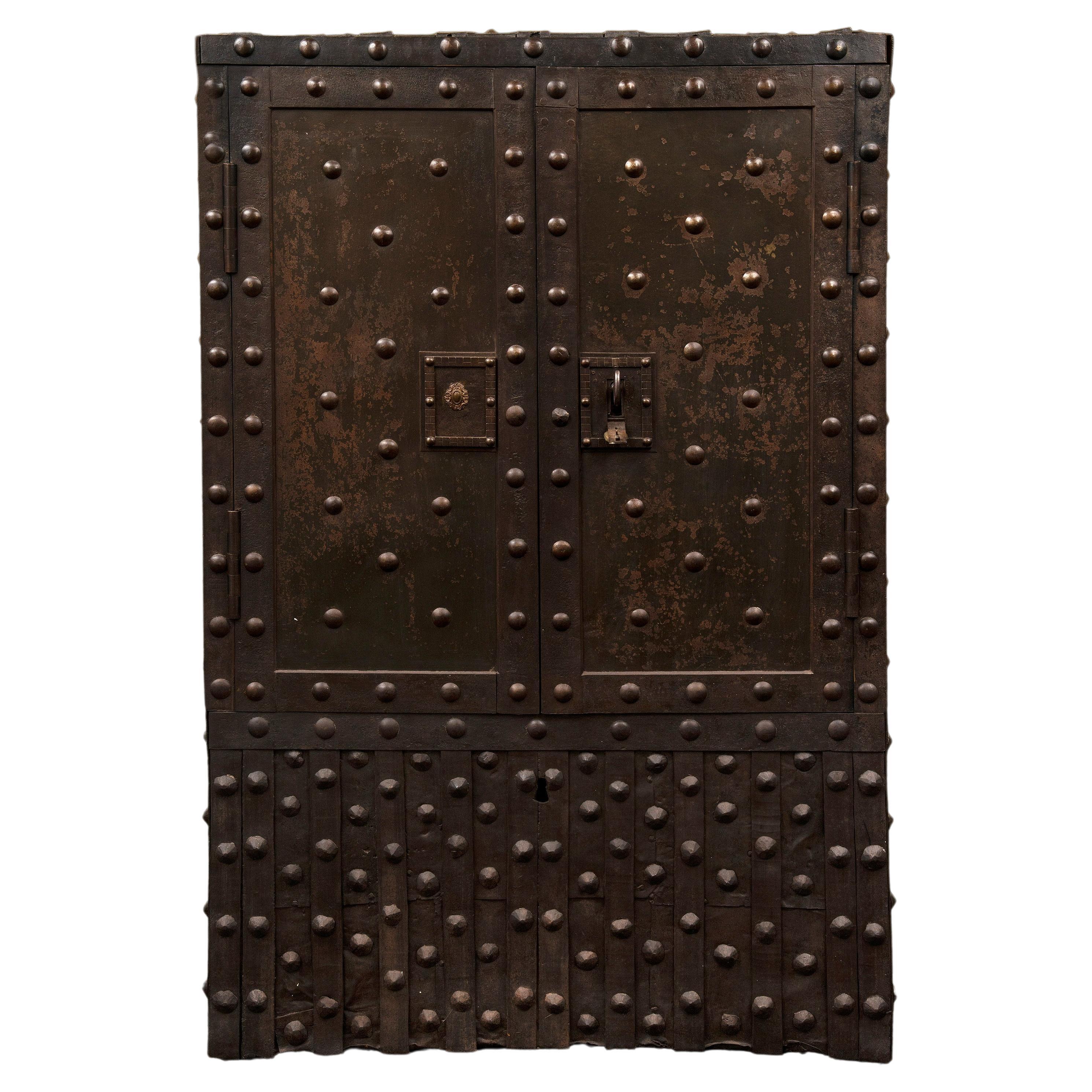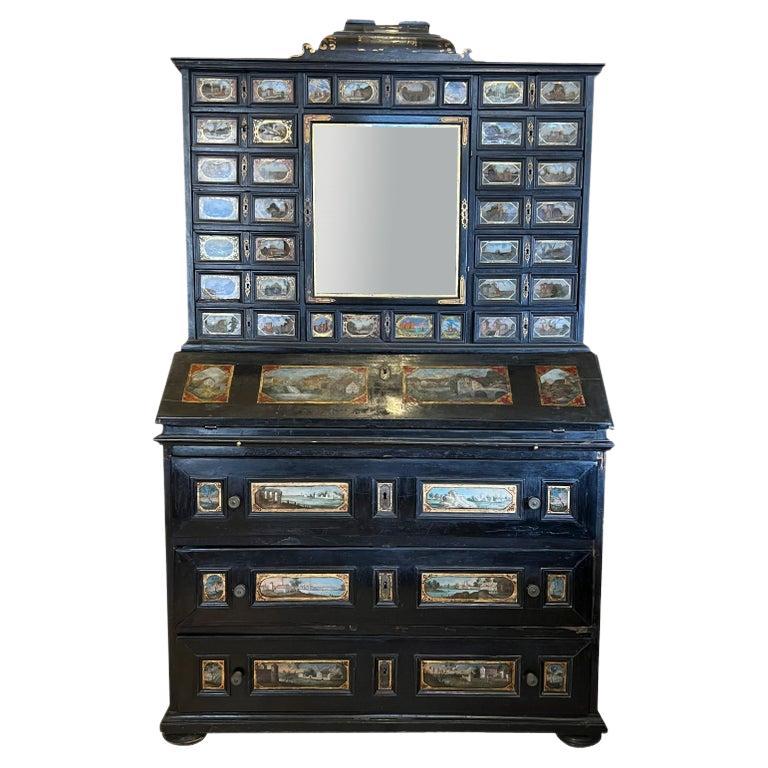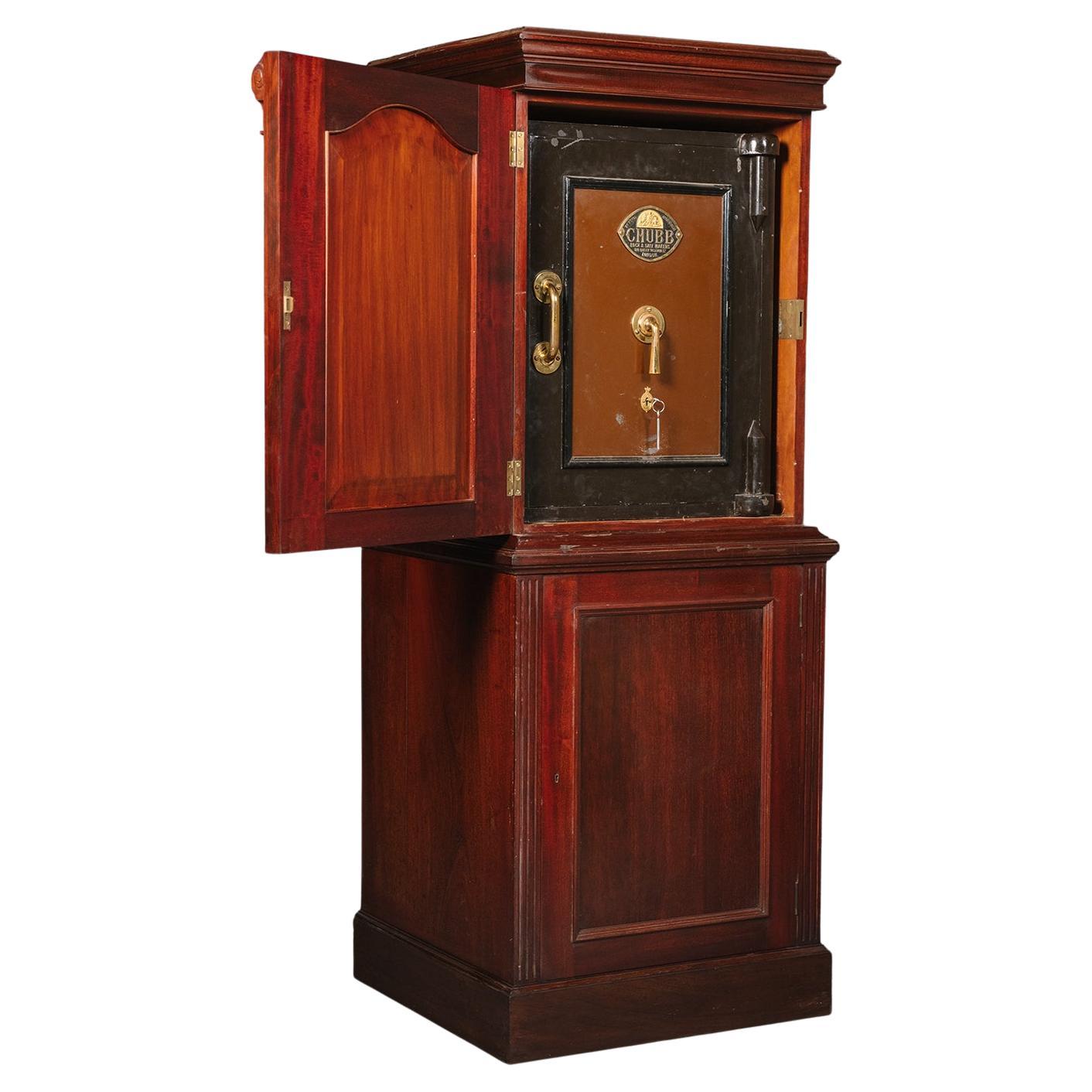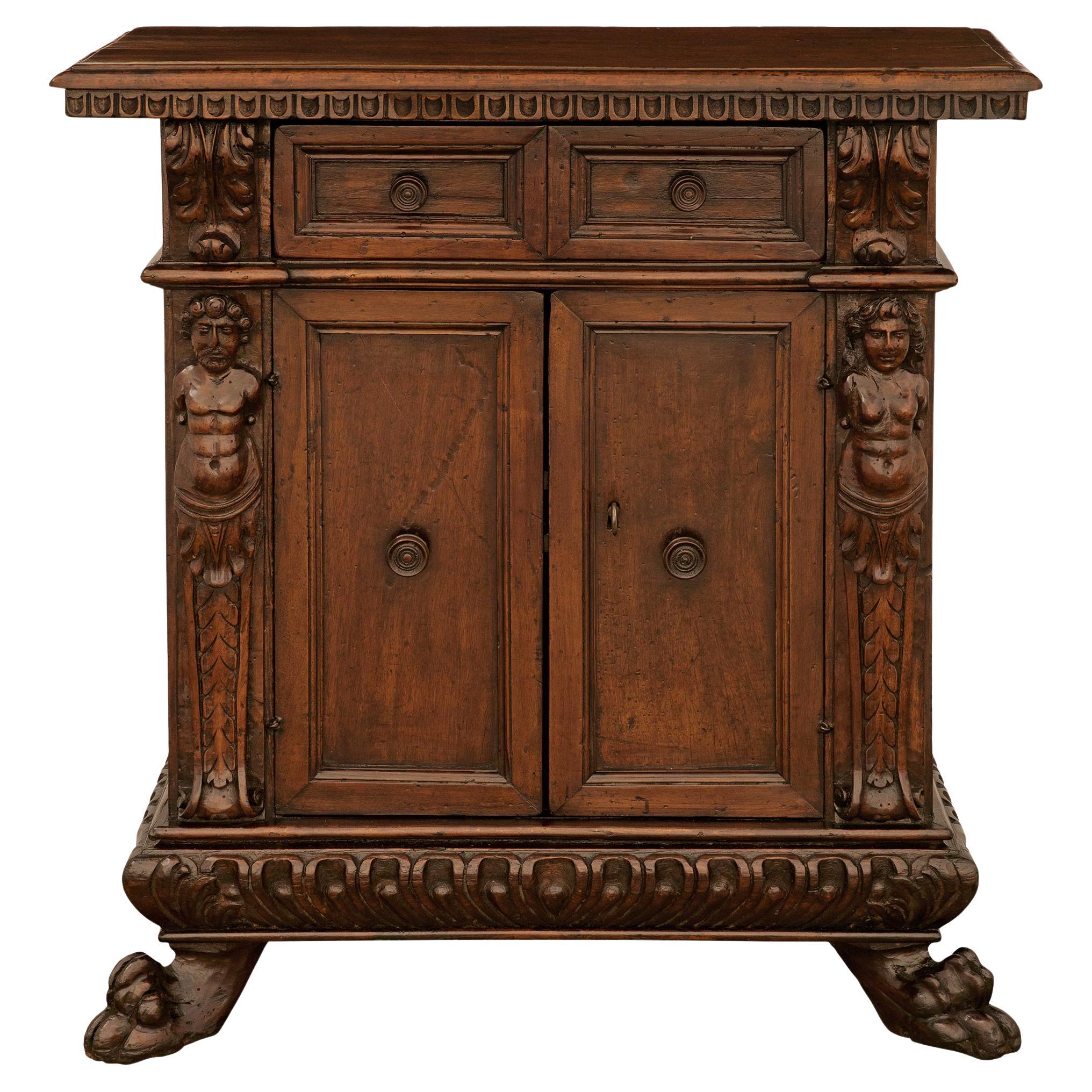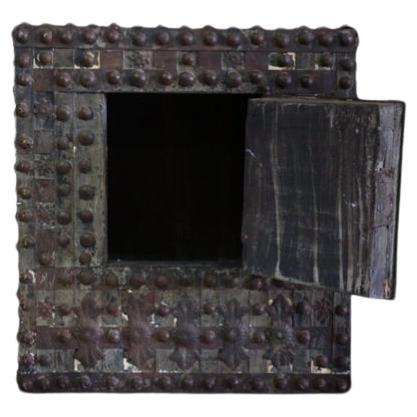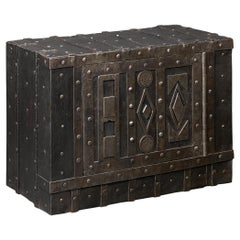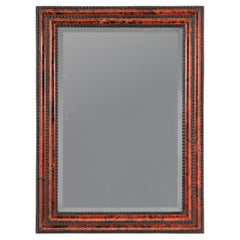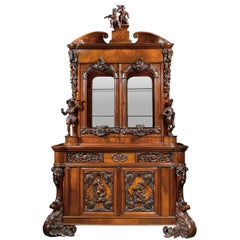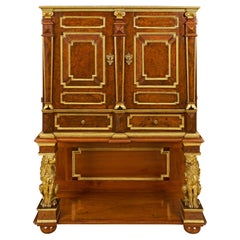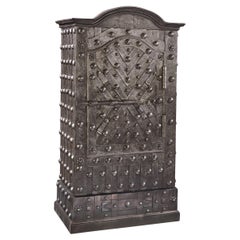
Italian Baroque Iron Safe
View Similar Items
Want more images or videos?
Request additional images or videos from the seller
1 of 9
Italian Baroque Iron Safe
$124,500List Price
About the Item
- Dimensions:Height: 63.38 in (160.99 cm)Width: 36.75 in (93.35 cm)Depth: 23.38 in (59.39 cm)
- Style:Baroque (In the Style Of)
- Materials and Techniques:
- Place of Origin:
- Period:
- Date of Manufacture:Circa 1700
- Condition:
- Seller Location:New Orleans, LA
- Reference Number:Seller: 31-80491stDibs: LU891137991992
About the Seller
5.0
Recognized Seller
These prestigious sellers are industry leaders and represent the highest echelon for item quality and design.
Established in 1912
1stDibs seller since 2010
109 sales on 1stDibs
Typical response time: 4 hours
Authenticity Guarantee
In the unlikely event there’s an issue with an item’s authenticity, contact us within 1 year for a full refund. DetailsMoney-Back Guarantee
If your item is not as described, is damaged in transit, or does not arrive, contact us within 7 days for a full refund. Details24-Hour Cancellation
You have a 24-hour grace period in which to reconsider your purchase, with no questions asked.Vetted Professional Sellers
Our world-class sellers must adhere to strict standards for service and quality, maintaining the integrity of our listings.Price-Match Guarantee
If you find that a seller listed the same item for a lower price elsewhere, we’ll match it.Trusted Global Delivery
Our best-in-class carrier network provides specialized shipping options worldwide, including custom delivery.More From This Seller
View All18th-Century Tabletop Italian Diamond Front Iron Safe
Located in New Orleans, LA
Italian Tabletop Diamond Front Iron Safe
18th century
This remarkable 18th-century tabletop safe represents an exceptional fusion of security innovation and decorative metalwork. Co...
Category
Antique 18th Century Historical Memorabilia
Materials
Iron
Flemish Baroque Tortoiseshell Mirro
By Flemish
Located in New Orleans, LA
This monumental 17th-century Flemish mirror is crafted in the grand Baroque style. The magnificent frame is veneered in exquisite tortoiseshell with wave-moulded bands of ebony providing a flawless accent. Tortoiseshell and ebony were both among the most precious and coveted materials of the 17th century, and are used to their utmost effect in this exceptionally rare looking glass.
Flemish glassworkers enjoyed a reputation of excellence beginning in the 16th century. These skillful craftsmen are credited with the invention of the tin-mercury method of mirror-making, a process that made polished metal mirrors obsolete. They employed and excelled in a number of decorative techniques in creating the frames, including marquetry, japanning (Dutch and Flemish japanning was of the highest quality, surpassing even the English), and the use of tortoiseshell veneering...
Category
Antique 17th Century Baroque Wall Mirrors
Materials
Tortoise Shell, Mirror, Ebony
19th Century Dutch Bureau Bookcase
Located in New Orleans, LA
This magnificent and important Dutch mahogany bureau bookcase, exuberantly carved and adorned with superb figural carvings, impressive scrolled feet and elaborate applied decoration....
Category
Antique 19th Century Dutch Other Bookcases
Materials
Mahogany
Louis XIV Inspired French Linen Press
Located in New Orleans, LA
Enveloped in sumptuous parquetry and doré bronze, this majestic Louis XIV inspired French linen press displays the characteristics of superior craftsmanship and luxurious design seen in the creations of the iconic Françios Linke. Crafted of sumptuous kingwood, the glorious parquetry door opens to reveal six compartments used to store linens, such as those for the bedroom or even the dining table. The masterful woodwork is flawlessly balanced by intricate doré bronze mounts in the form of Neoclassical floral swags, garlands, plumes and acanthus scrolls. The delicately spiraled doré bronze feet give the cabinet a sense of lightness and balance. Enhanced by a beautiful rouge marble top, this elegant linen press is an excellent example of late 19th century French furniture...
Category
Antique 19th Century French Louis XIV Linen Presses
Materials
Bronze
19th Century Coromandel Inlaid Vitrine
Located in New Orleans, LA
Highly-prized coromandel, or East Indian ebony, was used to create this beautiful Victorian vitrine. Featuring delicate inlay in the Victorian/Edwardian style and glass panels framed in the equally luxurious satinwood, this cabinet is constructed to fit flush against a wall with baseboards. Elegant cabinets such as this are perfect for displaying one's treasures, but with original locks, keys, mirrors and fleur-de-lis fabric, this case is a prized possession unto itself,
circa 1890.
Measures: 30" wide x 14 ½" deep x 41 ½" high.
Coromandel ebony is variegated brown and black, often called "streaky," wood. It is considered a highly valuable wood for turnery, fine cabinet...
Category
Antique 19th Century English Victorian Vitrines
Materials
Glass, Mirror, Ebony, Satinwood
19th Century French Vitrine by Francois Linke
By François Linke
Located in New Orleans, LA
This rare and stunning vitrine was crafted by the illustrious French ébéniste François Linke. A master of the Louis XVI style, Linke was renowned for his highly original designs t...
Category
Antique 19th Century French Rococo Vitrines
Materials
Bronze
You May Also Like
18th Century Wrought Iron Italian Antique Hobnail Safe Strong Box Bar Cabinet
Located in Carimate, Como
Beautiful and rare example of late 18th century Italian master blacksmith craftsmanship, this antique studded safe with typical all-around hobnails and great wrought iron details, pr...
Category
Antique Late 18th Century Italian Baroque Cabinets
Materials
Metal, Wrought Iron
18th Century Wrought Iron Italian Antique Hobnail Safe Strong Box Bar Cabinet
Located in Carimate, Como
Beautiful and rare example of late 18th century Italian master blacksmith craftsmanship, this antique studded safe with typical hobnails and great wrought iron details, probably from...
Category
Antique Late 18th Century Italian Baroque Cabinets
Materials
Metal, Wrought Iron
Italian 17th Century Baroque Period Walnut and Iron Specimen Cabinet
Located in West Palm Beach, FL
A handsome Italian 17th century Baroque period Walnut and iron specimen cabinet. The three door eleven drawer cabinet is raised by impressive paw feet below a mottled border with a striking reeded gadroon like design. At the center are two doors decorated with arch shaped recessed panels with fine foliate carvings and iron lion head pulls flanked by remarkable columns with large acanthus leaves and richly carved personages. The two drawers also display handsome lion head iron...
Category
Antique 17th Century Italian Baroque Cabinets
Materials
Iron
Italian 17th Century Burl Walnut, Gilt Iron and Giltwood Baroque Cabinet
Located in West Palm Beach, FL
A spectacular Italian 17th century burl walnut, gilt iron and giltwood eighteen drawer, three door Baroque cabinet. The impressive cabinet is raised by bun feet below the bottom tier...
Category
Antique 17th Century Italian Baroque Cabinets
Materials
Iron
Early 19th century painted iron safe
Located in Debenham, Suffolk
Early 19th century painted iron safe circa 1830.
We are pleased to offer this cast iron safe in near original condition and still functioning today.
Cast fielded panels to front an...
Category
Antique Mid-19th Century English Early Victorian Cabinets
Materials
Iron
Magnificent Italian Baroque Secretary, circa 1700
Located in Los Angeles, CA
The upper case with swept pediment and stepped molded edge fitted with 11 drawers and an arched door. The lower case with a slant front opening over a well above three long drawers e...
Category
Antique Early 18th Century Baroque Secretaires
Materials
Maple, Olive
Recently Viewed
View AllMore Ways To Browse
Antique Floor Safes
Antique Lock Picking
Blue Hobnail
Hobnail Antique Safe
Hobnail Safe
Japanese Cabinet Doors
Mahogany And Glass Display Cabinet
Black French Shelves
German Kitchen Cabinets
Used Stable Doors
Black China Cabinet
Chinese Walnut
German Display Case
Vintage Files
Walnut Glass Display Cabinet
Walnut Veneer Interior Doors
White Cabinet With Glass Doors
Glass Mahogany Display Cabinet
